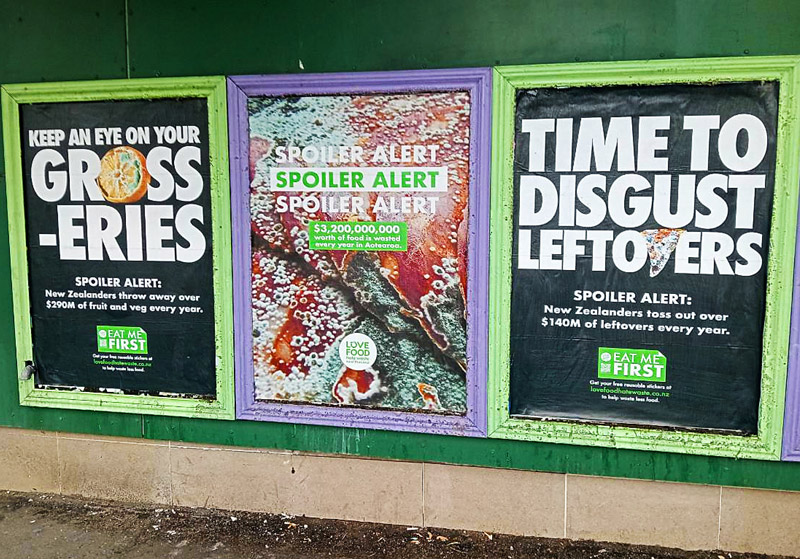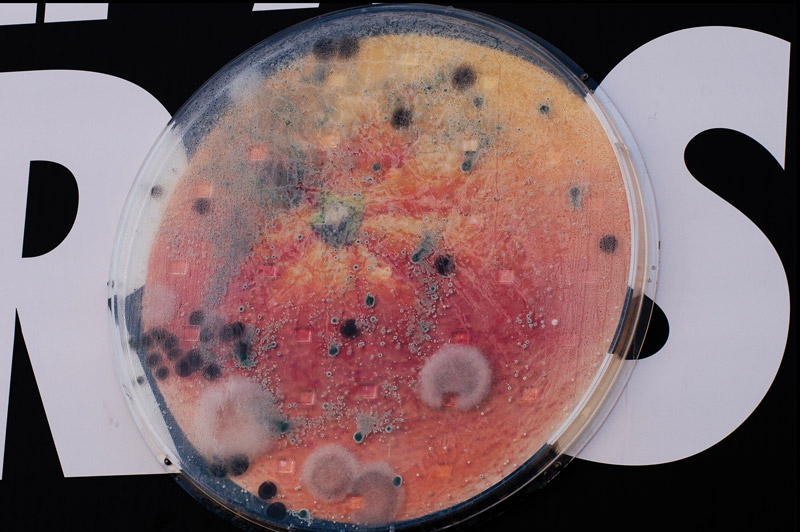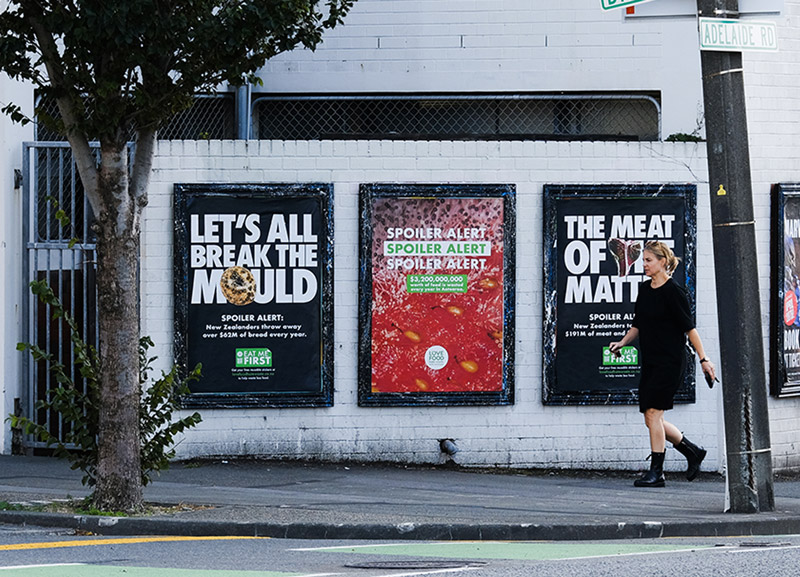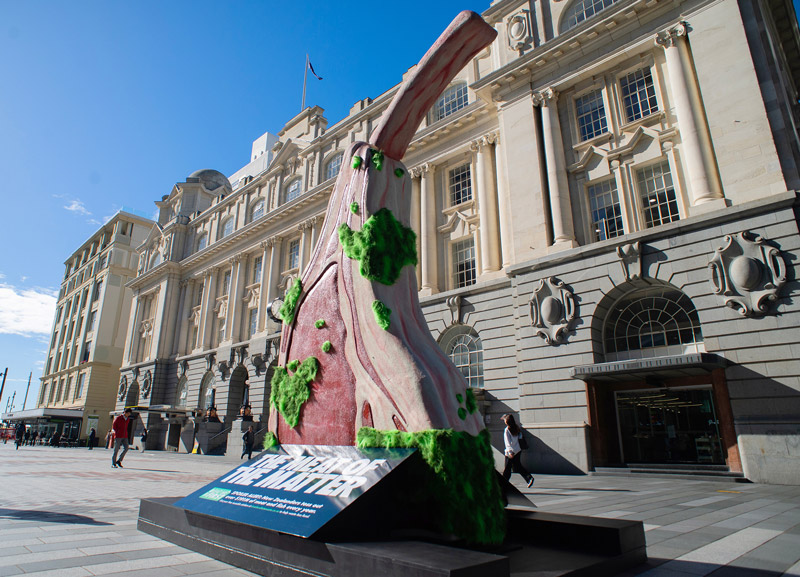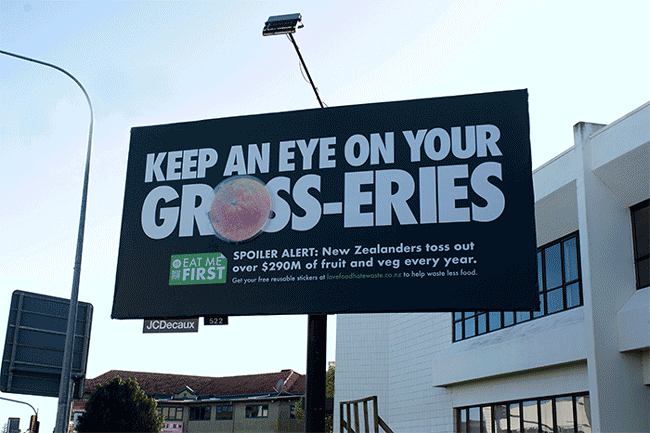AUCKLAND, Today: New Zealanders waste $3.2B worth of food every year, impacting both our wallets and the environment. It’s a staggering problem that demands attention and action from everyone.
To cut household food waste by 50% by 2030, Love Food Hate Waste NZ (LFHW) and TBWA\New Zealand got creative. They made giant billboards that grew mould over weeks to catch attention.
TBWA\NZ, with Landcare Biometrics, created three huge petri dishes filled with agar to grow safe mould from blue cheese. Each dish was 1 metre wide. Outdoor ad specialists Bootleg helped bring these living billboards to life.
The billboards went up in mid-April, growing mould naturally over six weeks. This stunt highlighted the food waste issue and promoted reusable Eat Me First stickers. These stickers, available via QR codes on the billboards, LFHW’s website, regional councils, and selected Woolworths stores, remind people to eat their older food first.
“We needed our message to be in your face,” said Sophie Wolland, Project Manager of LFHW. “Because food waste is such a major issue that we don’t often think about day to day.”
“It’s one of those issues where it’s tough to get people to take action. It needs some big attention-grabbing stunts and a smart way to remind us all to eat our older food first, before it needs to be thrown out.”
“The stark visual representation of wasted food aims to shock passersby into action, motivating and inspiring Kiwis to reduce their food waste, minimise their carbon footprint by cutting harmful emissions from food waste and save money,” says Wolland.
“It’s one of those issues where it’s tough to get people to take action. It needs some big attention-grabbing stunts and a smart way to remind us all to eat our older food first, before it needs to be thrown out,” says Shane Brandnick, Chief Creative Officer, TBWA\NZ.
“This campaign was super technical for the team to deliver but a really vivid reminder, that if we don’t eat it, we waste it – and that’s terrible for a family’s budget and really bad for our environment.”
LFHW also went big with several giant monuments of mouldy food. A huge apple covered in mould by the waterfront in Wellington reminded Kiwis that “nobody likes a bad apple,” while a massive piece of mouldy toast in the train station nearby inspired people to “break the mould.”
The campaign culminated with the revived NZ Lamb & Beef’s 16-foot tall lamb chop in Te Komititanga Plaza at Britomart, of course, with a mouldy twist.
Now gone off, just like all their campaign billboards and posters, the lamb chop towered over the public covered in faux mould. Accompanying signage read “the meat of the matter” – which is surely fitting for the way this for-good organisation approached solving this prevalent issue.
Share this Post

